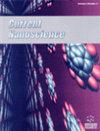Detection of Explosive Residues Using Nanomaterial-based Sensors: A Review
IF 1.5
4区 材料科学
Q4 BIOTECHNOLOGY & APPLIED MICROBIOLOGY
引用次数: 0
Abstract
: Due to the recent rise in explosive-based terrorism and ecological issues, the invention of good capacity detectors for the identification of explosives has emerged as one of the major thirsts in the scientific community. Due to their unique optical and electrical properties, nanocomposites can meet all of the prerequisites for developing preferential, responsive, easy, and cost-effective sensor nodes for the sensing of various explosives. This study primarily throws light on current developments in explosives detection using nanomaterial-based sensors. In particular, it describes how quantum dots, carbon nanomaterials, monometallic nanomaterials, and bimetallic nanomaterials have been used to detect explosives optically and electrochemically. The accurate and consistent features of the nanomaterials, including their synthesis, the explosive detection technique, and the analytical facets, are all thoroughly examined.利用纳米材料传感器检测爆炸物残留:综述
:由于最近以爆炸物为基础的恐怖主义和生态问题的增加,发明识别爆炸物的高容量探测器已成为科学界的主要渴求之一。纳米复合材料具有独特的光学和电学特性,可以满足开发优先、灵敏、简便、经济的传感器节点的所有先决条件,用于传感各种爆炸物。本研究主要介绍了利用纳米材料传感器检测爆炸物的最新进展。特别是介绍了如何利用量子点、碳纳米材料、单金属纳米材料和双金属纳米材料进行爆炸物的光学和电化学检测。书中对纳米材料的准确性和一致性特征,包括其合成、爆炸物检测技术和分析方面,都进行了深入研究。
本文章由计算机程序翻译,如有差异,请以英文原文为准。
求助全文
约1分钟内获得全文
求助全文
来源期刊

Current Nanoscience
工程技术-材料科学:综合
CiteScore
3.50
自引率
6.70%
发文量
83
审稿时长
4.4 months
期刊介绍:
Current Nanoscience publishes (a) Authoritative/Mini Reviews, and (b) Original Research and Highlights written by experts covering the most recent advances in nanoscience and nanotechnology. All aspects of the field are represented including nano-structures, nano-bubbles, nano-droplets and nanofluids. Applications of nanoscience in physics, material science, chemistry, synthesis, environmental science, electronics, biomedical nanotechnology, biomedical engineering, biotechnology, medicine and pharmaceuticals are also covered. The journal is essential to all researches involved in nanoscience and its applied and fundamental areas of science, chemistry, physics, material science, engineering and medicine.
Current Nanoscience also welcomes submissions on the following topics of Nanoscience and Nanotechnology:
Nanoelectronics and photonics
Advanced Nanomaterials
Nanofabrication and measurement
Nanobiotechnology and nanomedicine
Nanotechnology for energy
Sensors and actuator
Computational nanoscience and technology.
 求助内容:
求助内容: 应助结果提醒方式:
应助结果提醒方式:


